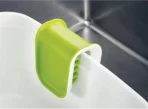-33%Hot










Hurry and get discounts on all Mirage Products up to 50%
80 د.إ Original price was: 80 د.إ.54 د.إCurrent price is: 54 د.إ.
26 in stock
26 in stock
In stock
In stock
In stock
In stock
In stock
No account yet?
Create an Account
Mr. Mackay –
If that’s what you think how bout the other way around? How can you evaluate content without design? No typography, no colors, no layout, no styles, all those things that convey the important signals that go beyond the mere textual, hierarchies of information, weight, emphasis, oblique stresses, priorities, all those subtle cues that also have visual and emotional appeal to the reader.